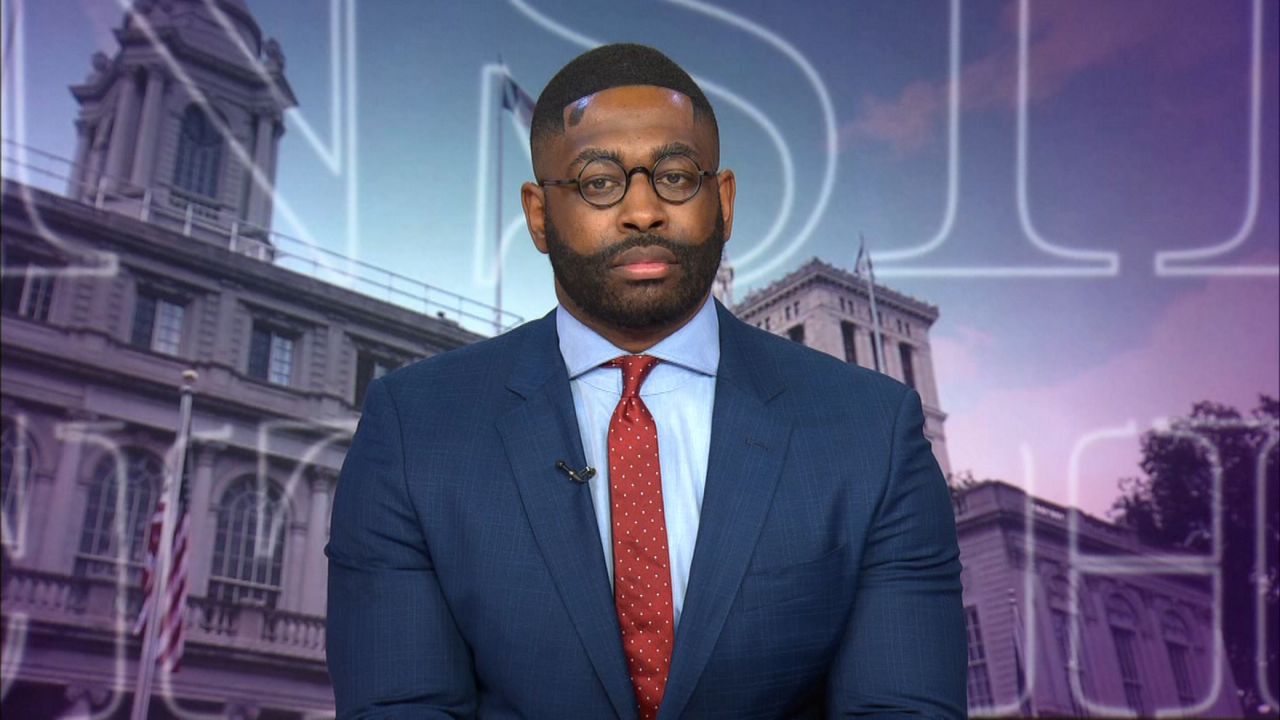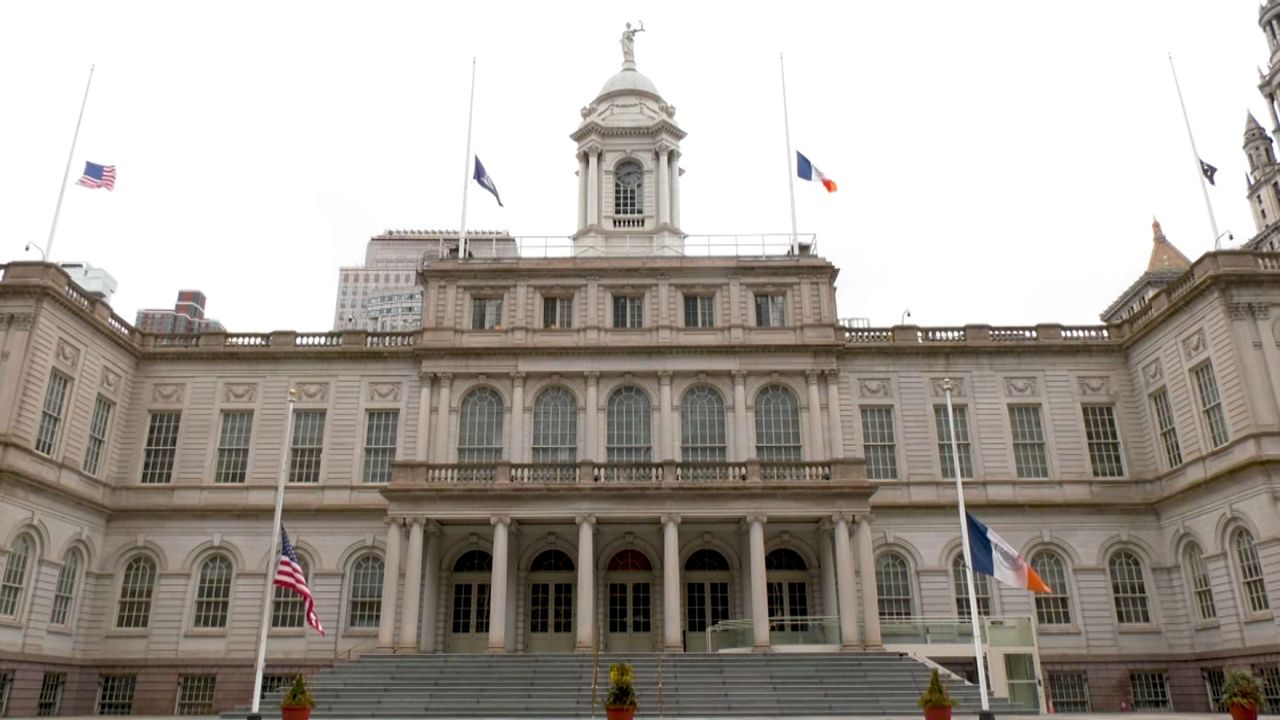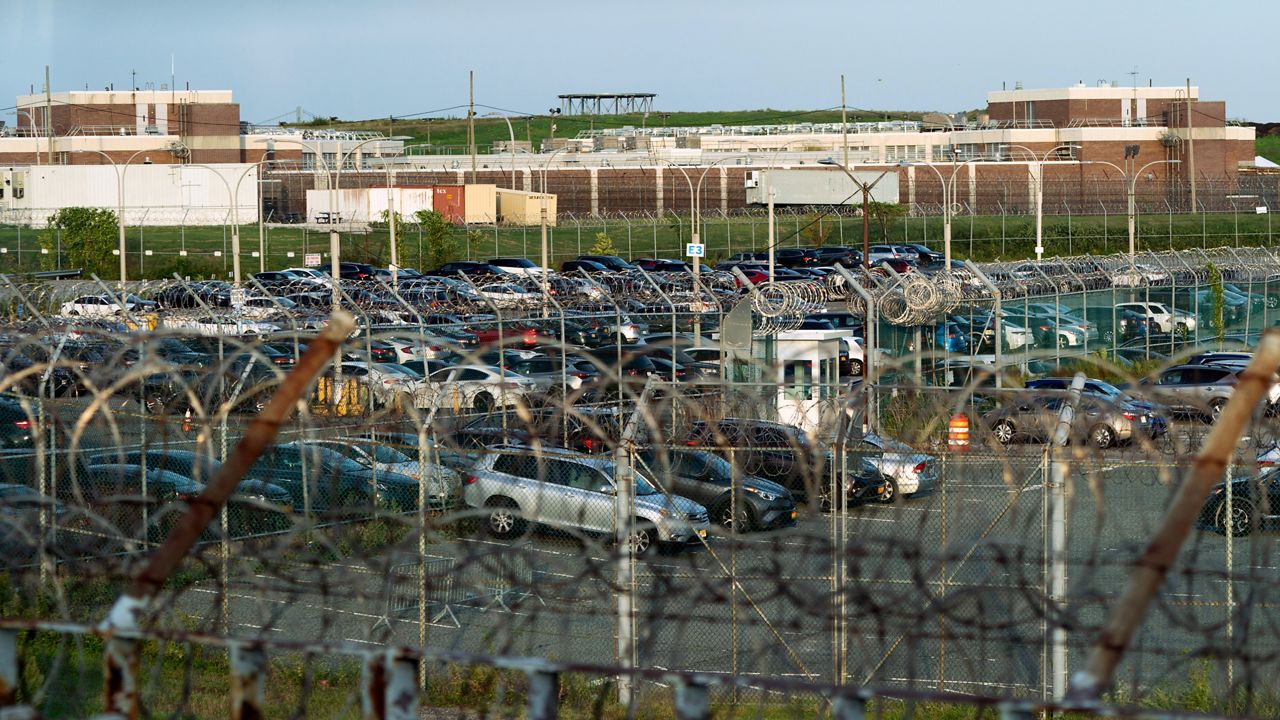Building a relief center for asylum seekers under tents on Randall’s Island was a controversial decision.
Now, city officials say, they can’t rule out having to do it again.
“Everything is on the table,” emergency management commissioner Zach Iscol said Monday. “Yes, we’re considering it.”
Iscol made the remarks in testimony Monday before the City Council, which is holding two days of hearings on the city’s response to the migrant crisis.
What You Need To Know
-
City officials said Monday they won’t rule out rebuilding the controversial migrant tent shelter on Randall’s Island
-
The tent center was originally planned for Orchard Beach, relocated to Randall’s Island then dismantled about a month later as the surge of migrants receded
-
The city’s ongoing response to the migrant crisis is currently the subject of two days of City Council hearings
-
City Council members largely agreed with the administration’s plea for more federal and state aid, as the city braces for another expected wave of arrivals
The city is currently bracing for another expected surge of arrivals, with a federal policy known as Title 42 that allowed migrants to be turned away at the border currently in legal limbo.
On Monday, the Supreme Court temporarily halted the expiration of the pandemic-era rule that was set to expire Wednesday.
The tent center was originally planned for Orchard Beach and was then relocated to Randall’s Island, only to be dismantled about a month later as the migrant crisis receded. During one testy exchange Monday, the city defended its actions.
“This Council stands opposed to reinstating those open tent city facilities,” Brooklyn City Councilmember Shahana Hanif said.
“It was remarkable, that operation,” Iscol said, referring to Randall’s Island. “There was not a need for it at that time, because the buses stopped coming. But no, I will not commit to taking anything off the table in this unprecedented emergency.”
Some of the issues raised Monday require federal action, like expediting work permits for migrants and alleviating the disastrous backlog at federal immigration offices in lower Manhattan.
City officials pushed back when pressed on some of the administration’s own decisions, like where it chooses to site migrant shelters and whether larger relief centers are being used as intended.
“This idea that we’re somehow circumventing the shelter system with a shadow system,” Iscol told Hanif, “is nonsense.”
He also said: “Our agency, along with our other city partners, have now looked at over a hundred locations across the city. I think it’s telling that we have not received a single — as far as I know — viable location from the City Council.”
City Council members contested that assertion, but for the most part, they agreed with the administration’s plea to the federal and state governments that the city cannot continue to shoulder this burden alone.
“This city is going to go belly up trying to provide for people that we care about, and nobody else does,” Queens City Councilmember Joann Ariola said.
“The time is now,” said immigrant affairs commissioner Manuel Castro, directing his remarks at the state and federal governments. “We need you to step up and support New York City and asylum seekers. You’re making an incredibly difficult situation much worse.”









